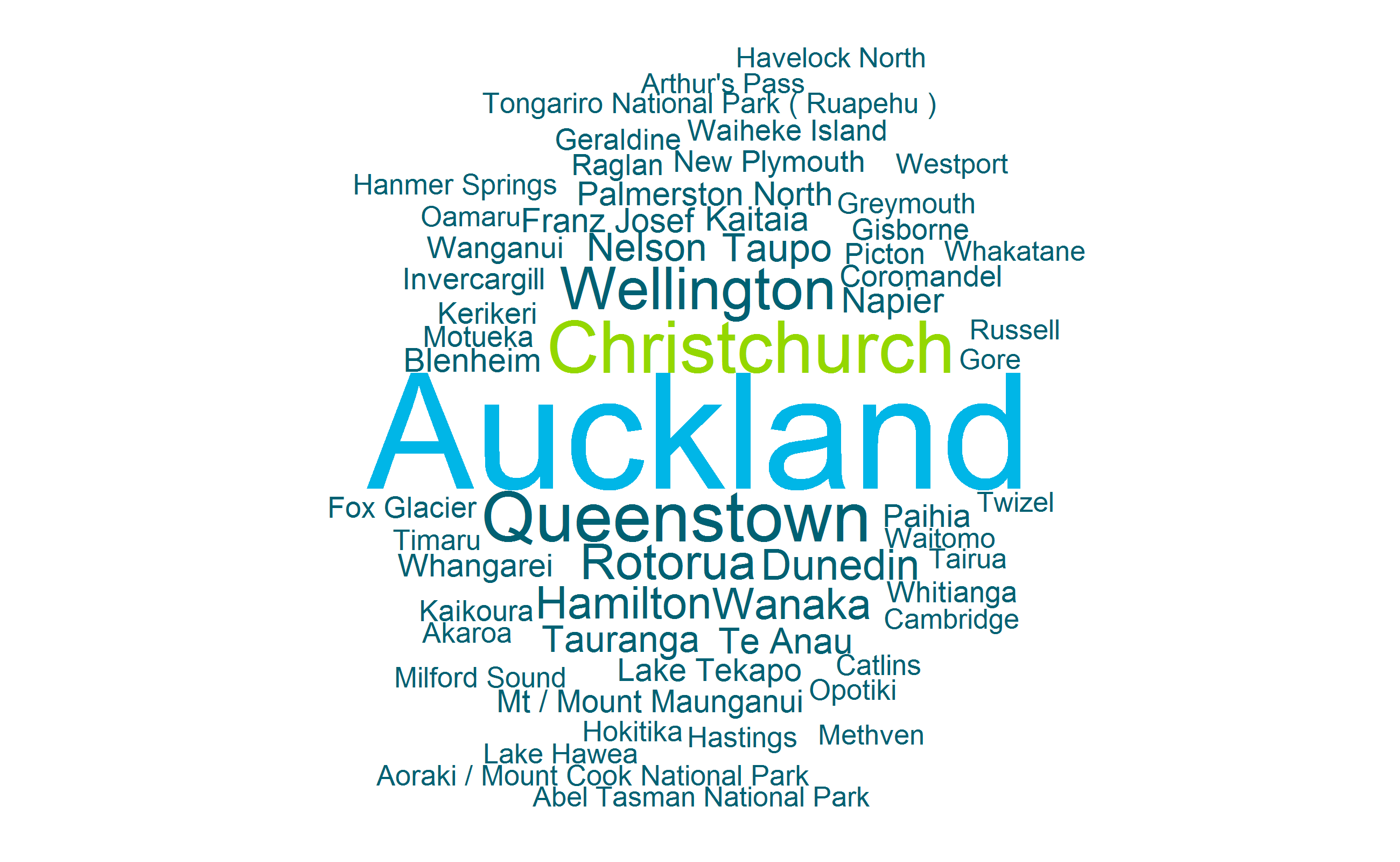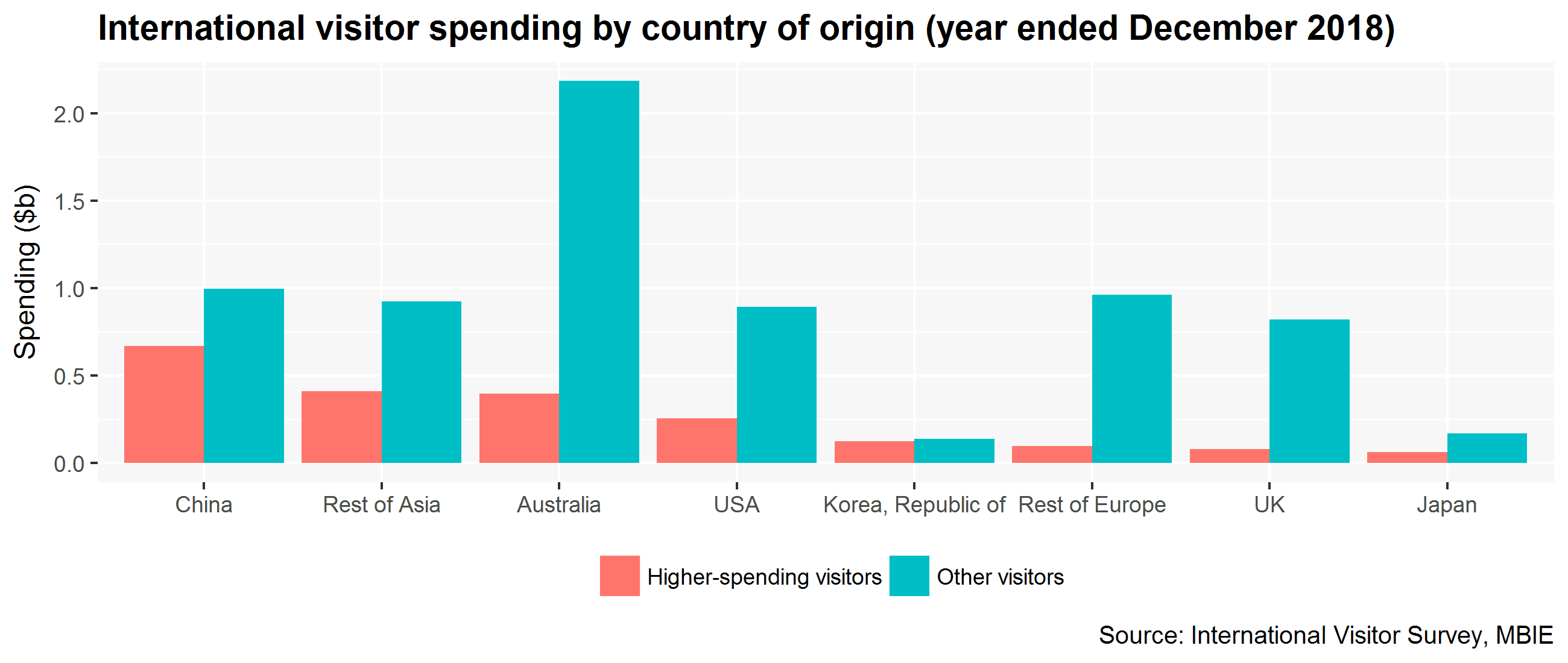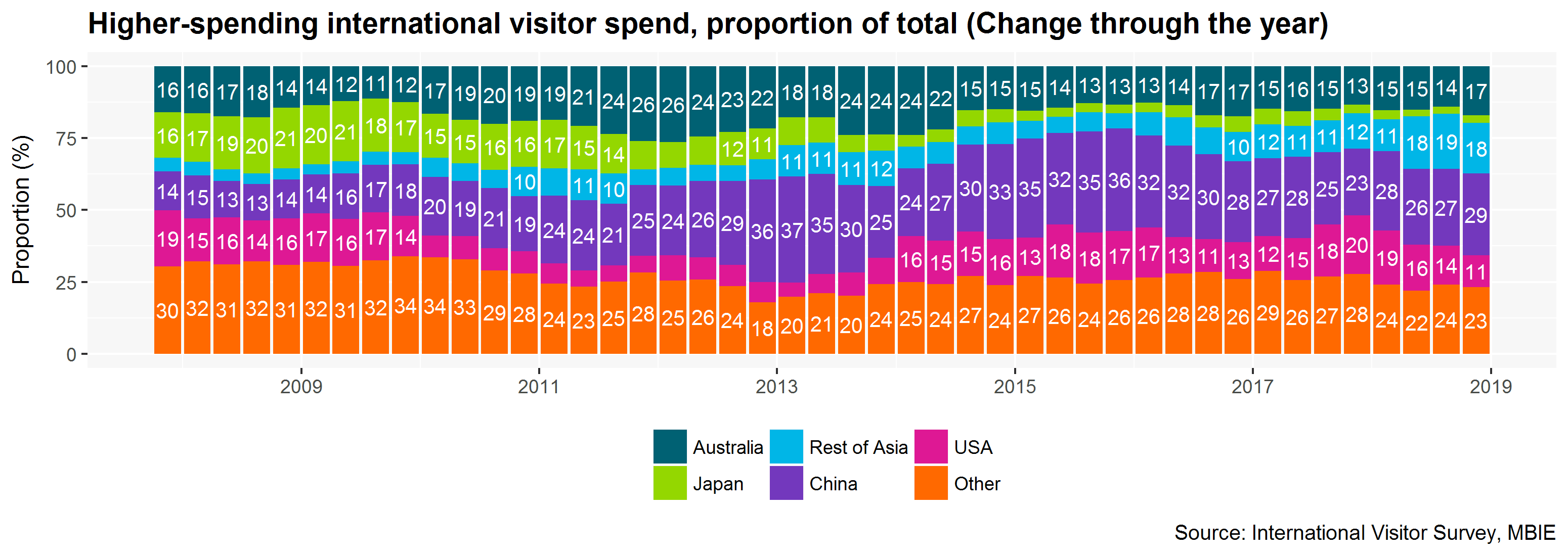This article was produced by the Ministry of Business, Innovation and Employment (MBIE). The content you find below is exclusive to the Tourism Evidence and Insights Centre.
The analysis below uses data from the International Visitor Survey (IVS) to understand the characteristics of visitors who spend higher amounts per day when they are in New Zealand. Key findings are:
Higher-spending visitors are important to the wider tourism industry. An aim of the Government’s Tourism Strategy is to improve productivity of the sector by increasing value over volume. Attracting higher value visitors is one way to do this. A partnership between Auckland Tourism, Events and Economic Development (ATEED), UnionPay International and Immigration New Zealand aimed at attracting more “high-value” Chinese visitors to New Zealand during shoulder and the off-peak season was announced in February 2019.
Understanding these visitors is challenging, because they are often difficult to identify and collect information on. However, we do see some higher-spending visitors in the IVS data. As there is no internationally recognised definition of higher-spending visitors, we have defined them as the top 10 per cent of visitors by spend-per-day. The 10 per cent threshold values were calculated for the 2008 to 2018 period. The 10 per cent threshold means that the exact expenditure that higher-spending visitors must meet will change between years.
The plot below shows this threshold. For example, in the year 2016, higher-spending visitors are defined as those visitors whose daily spending averaged above $890 NZD. The threshold value for the year 2015 ($1,040 per day) is the largest value seen over the last ten years.

Please be aware that the data used in this analysis, comes from the International Visitor Survey which is subject to a degree of sample error. As such, it is more usuful to look at longer term trends rather than individual years.
For the year ended December 2018, higher-spending visitors spent $2.3 billion in total, equating to 21 per cent of the total international visitor spend in New Zealand. This worked out at around 338,000 higher-spending visitors.


The average spending of higher-spending visitors was around $6,900, more than double the average expenditure of other visitors (approximately $3,300).

Higher-spending visitors were most likely to come to New Zealand for a holiday, similar to the overall visitor trend. Higher-spending holidaymakers made up approximately 66 per cent of all higher-spending international arrivals in the year ended December 2018, yet made up around 73 per cent of spend. In contrast, higher-spending visitors for visiting friends and relatives (VFR) made up of 6.5 per cent of all higher-spending arrivals and made up 7 per cent of all higher-spending visitors.
Not surprisingly, VFR visitors were less likely to be higher-spending visitors. VFR are widely acknowledge to have lower average spend and are likely to spend less on products such as accommodation.

A higher proportion of higher-spending visitors stayed in hotel accommodation compared to other visitors. Higher-spending visitors were less likely to stay at hosted accommodation, compared with other visitors.

The plot below shows the proportion of visitors by age in each year. In the year ending December 2018, 50 per cent of higher-spending visitors were aged between 45 and 64 years old, while the same age range made up only 37 per cent of other visitors.

Higher-spending visitors spent on average five days in New Zealand, compared to 20 days for other visitors. So, despite spending a higher amount per day, higher-spending visitors may have spent less overall when compared to other visitors.

For the year ended December 2018, higher-spending visitors were most likely to visit Auckland, followed by Queenstown, Christchurch, Rotorua and Wellington. These visitors were more likely to state they had been to Queenstown than other visitors. This could suggest the high price of accommodation in Queenstown is less of a deterrent for higher-spending visitors than other visitors.
The wordcloud below presents the most commonly-cited places visited by higher-spending visitors:

The graph below presents the most commonly cited places visited by other visitors:

For the year ended December 2018, Chinese visitors contributed the most to the overall higher-spending visitor market (29 per cent, or $670m), followed by Rest of Asia (18 per cent), Australia (17 per cent) and the USA (11 per cent).

Higher-spending visitors from the rest of Asia has shown strong growth in spend over the last few years. However, this data should be treated with caution, as the International Visitor Survey is not designed to provide accurate estimates of the rest of Asia market.
